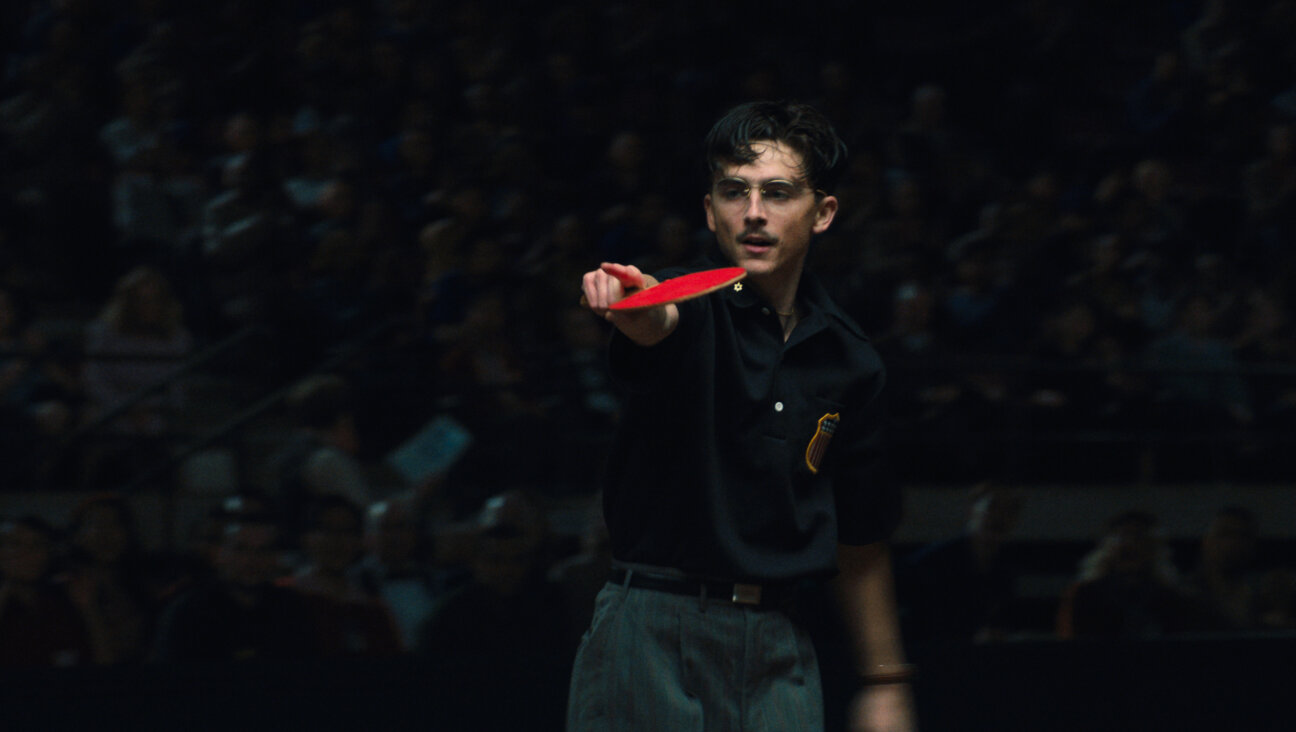Neta Gain; A Choreographer Returns for Her Encore
Choreographer Neta Pulver- macher has aptly named her new season, which runs from May 11 to May 22 in New York at The Flea Theater, “NETRO: A Neta Dance Company Retrospective.” “I graduated from The Juilliard School in 1985 and started working right away. This season is a milestone — 20 years,” she noted in an interview with the Forward. “A celebration for surviving that long.”
Pulvermacher, who came to the United States from Israel, believes that each of her dances is very different from her others, which is atypical of many of her generation’s choreographers. For this season, she has chosen dances that represent these diverse choreographic interests, to be shown side by side on two different programs.
Pulvermacher will dance the lead, for the first time in 10 years, in what she considers her signature work, the poignant “Five Beds/Children of the Dream.” Created in l993, and set to an original score by Yuval Gabay, the dance is an accumulation of memories of Pulvermacher’s childhood. She grew up in the 1960s in the children’s houses of Kibbutz Lehavot Habashan.
“‘Beds’ allowed me to include all my interests — really physical dancing, text and singing,” she said. She created the work after her son was born; it was made for him. Raising her son in a nuclear American family motivated Pulvermacher to revisit the unique circumstances of her own childhood on an experimental kibbutz. The cumulative effect of seamlessly woven images, some in full-bodied movement and some in dynamic gestures, some humorous and some tragic, charges this work with emotional power.
Her l990 “A Song” was inspired by teaching that she did during residencies in Alaska during the late 1980s. There, among the Tliglit people, she found communities — “little kibbutzim,” she calls them — whose language was disappearing. “How could I create a dance that would translate the idea of a vanishing language?” she remembered thinking. She considered the transformation of Hebrew to a spoken language, as she based this duet on the rhythms and lyrics of a Tliglit myth. While making “A Song,” she began thinking about how the brain recognized and remembered patterns in language. She applied her discoveries to her own compositional strategies, realizing the need to create a particular movement alphabet and language for each dance.
In “Goodbye and Goodluck” (1994), Pulvermacher looked at other traditions, closer to home. The dance, which takes its title from a short story by Grace Paley, is the result of Pulvermacher’s immersion in the landscape of the Lower East Side, imagining the memories that inhabit that space. As a Sabra championing the values of emerging Israeli culture, Pulvermacher said she originally looked with some disdain at the Eastern European culture that dominates American Jewish life. It was foreign, and it took years for her to understand and embrace it, as well as its humor and warmth. She investigated its humanitarian, literary and theatrical traditions and spoke with scholars who have kept the traditions alive. She questioned whether throughout the Diaspora there was a common Jewish body language — and for her, this dance poses and answers some questions.
Pulvermacher’s “uncontrollable passion” for music is revealed in all her dances, whether her collaboration is with modern experimentalists like John Zorn or with the British rock band XTC. She is always searching for new material, attending concerts and asking for suggestions from her many musician friends. She also finds inspiration in the classical canon. Some of her choreography is a pure visualization of the score. The 1999 “Vivaldiana,” set to Vivaldi’s “Concerto for Two Cellos in G Minor,” is such a dance, but Pulvermacher sees the six female dancers as representing the feminine life force in their response to this glorious score. One of her most recent works, “Rainbow Girl” (2003), is set to Schubert’s “Impromptus,” a work she revered so much that it took years to actually use it.
Among those performing with Pulvermacher this anniversary season will be artists who were in her first dances 20 years ago. Dancer/choreographer Kraig Patterson, an original member of her company, is an old friend and a fellow Juilliard graduate. Derry Swan, who danced in the Merce Cunningham Company after working with Pulvermacher, resumes her role from the original cast of “Five Beds.” Maile Okamura, who is currently dancing in the Mark Morris Group, also will participate in the retrospective. Pulvermacher is clearly excited about this reunion: “This is a dance party for everyone who has been part of my creative process over the last 20 years.”
Rose Anne Thom is on the faculty of Sarah Lawrence College and writes critiques for Dance Magazine.














